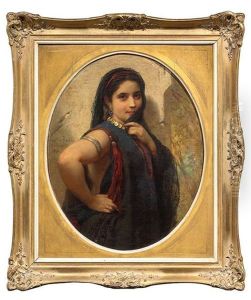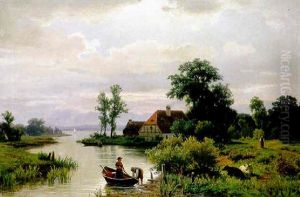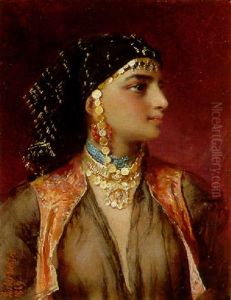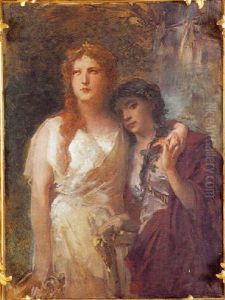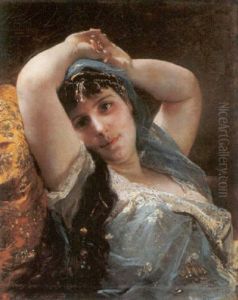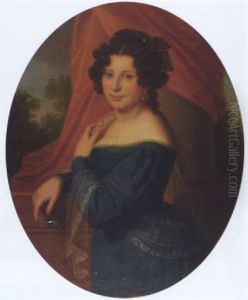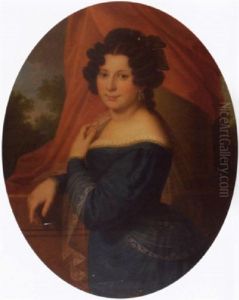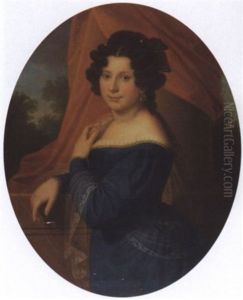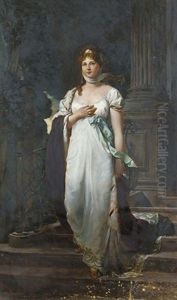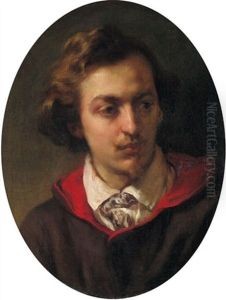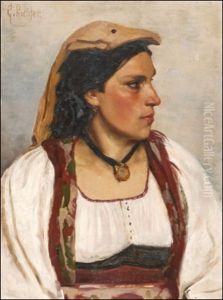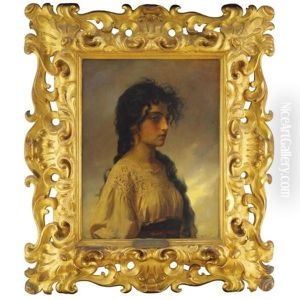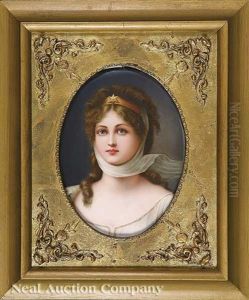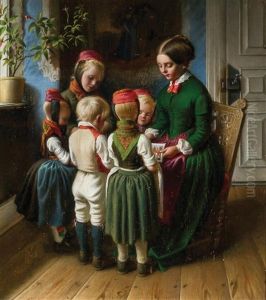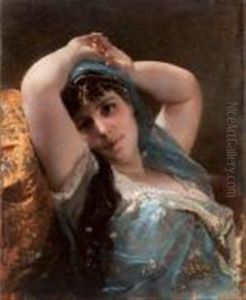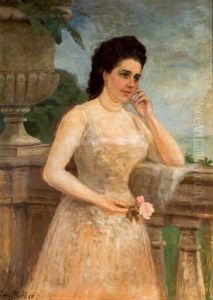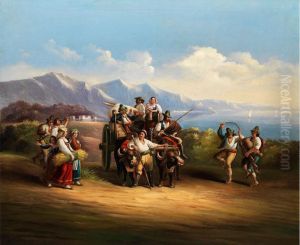Gustav Richter Paintings
Gustav Karl Johann Richter was a prominent 19th-century German painter known for his portraits and historical genre scenes. Born on September 4, 1823, in Berlin, Germany, Richter was part of a cultural epoch that valued the arts, especially in the blossoming intellectual and cultural scene of Berlin.
Richter received his formal art education at the Prussian Academy of Arts in Berlin, where he studied under various influential artists of the time, including Wilhelm von Schadow, who was a significant figure in the Düsseldorf school of painting. Richter's early work was influenced by the academic style of painting, which was characterized by its adherence to classical standards of beauty, form, and technique.
During his lifetime, Richter achieved considerable success and was known for his skill in capturing the likeness and character of his subjects in his portraits. His historical paintings often reflected a romanticized view of the past, which was common among 19th-century artists. He gained recognition for his historical genre scenes, which were well-received for their refined detail, composition, and use of color. Among his most famous works is the portrait of Queen Victoria, whom he painted in 1881. This particular commission elevated his status and brought him international attention.
Richter's work was part of the art collections of many of the royal families in Europe, and he received numerous honors and awards throughout his career. Despite his success, there are few records of his personal life, and he remains known primarily through his artwork.
Gustav Richter died on April 15, 1884, in Berlin, leaving behind a legacy of work that continues to be studied and appreciated for its contribution to 19th-century German art. His paintings can be found in various museums and private collections around the world, and they continue to be subjects of interest for art historians and collectors alike.

